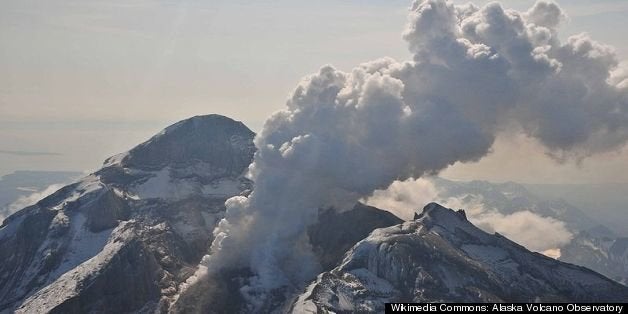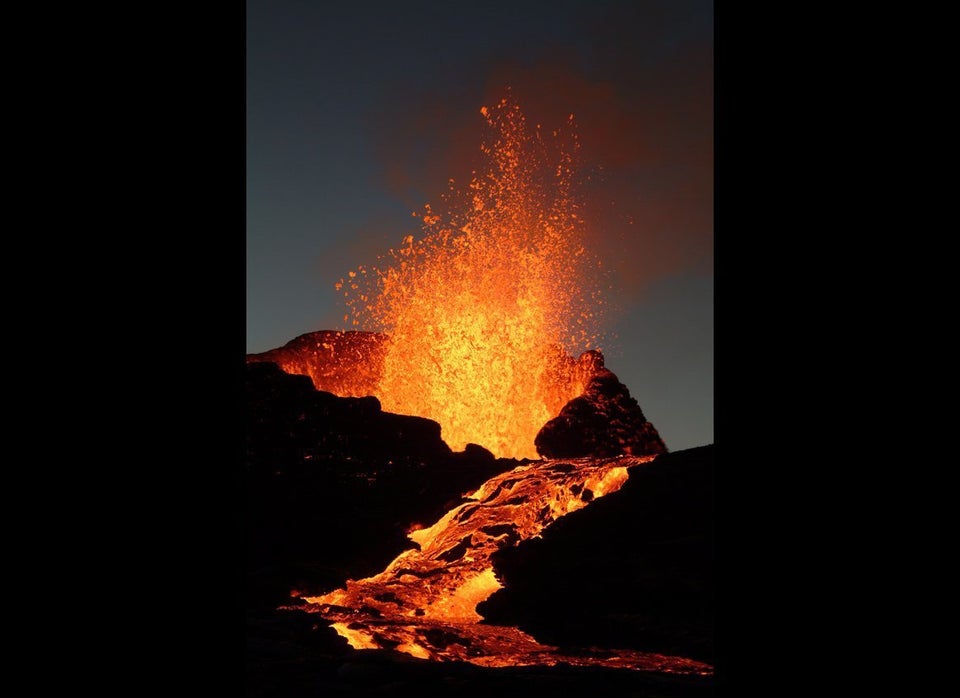
Do volcanoes scream before they erupt? Not quite. But new research shows that volcanoes emit a characteristic sound before blowing their tops -- though at frequencies too low for human hearing.
In a recent study, scientists used seismic sensors to record a series of eruptions in 2009 at the Redoubt volcano near Anchorage, Alaska. Before many of the blow-ups, there were small earthquakes that created so-called "harmonic tremors" -- essentially geologic "hums" that increased in pitch as the eruption neared.
“The frequency of this tremor is unusually high for a volcano, and it’s not easily explained by many of the accepted theories,” study co-author Alicia Hotovec-Ellis, a University of Washington doctoral student in Earth and space sciences, said in a written statement.
These rising sounds were documented starting at about 1 hertz (cycle per second) and gliding upward to about 30 hertz. In humans, the audible frequency range starts at about 20 hertz.
(story continues below)
This 10-second recording covers about 10 minutes of seismic sound and harmonic tremor, sped up 60 times.
This one-minute recording condenses about an hour of activity that includes more than 1,600 small earthquakes that preceded the first explosion with harmonic tremor.
"These seismic observations offer a window into the magmatic system and forces acting at several kilometers' depth – arguably the region that's sourcing the magma for these eruptions," study co-author Dr. Eric Dunham, an assistant professor of geophysics at Stanford University, said in a written statement.
"The better we understand the plumbing system beneath the volcano and how magma is being transported, the more accurately we can develop models to predict the timing, duration and explosiveness of eruptions," he said.
So, what exactly produces the noises? The research suggests that pressure in the passageway where magma flows may have been building. What caused such pressure remains a mystery, but possibly rock may have plugged the conduit -- kind of like a cork in a champagne bottle. So then, the pressurized magma may have pushed and grinded against the rock, creating the quakes and the associated sounds.
"The same thing happens when you run your fingers over a chalkboard -– you get stick-slip motion at your fingernail," Dunham said. "That's at a much higher frequency, but it's the same type of thing happening at Redoubt."
The researchers even created a computer model of the volcanic earthquakes based on this theory. The model may help with better understanding and even predicting volcanic activity.
"If there are processes leading to a volcanic eruption, you want to detect them early on and try to forecast the explosion," the study's lead author Ksenia Dmitrieva, a doctoral candidate in geophysics at Stanford University, said in a written statement. "It's very important to know about volcanoes because they're such a major hazard."
The study was published on July 14 in the journal Nature Geoscience.

